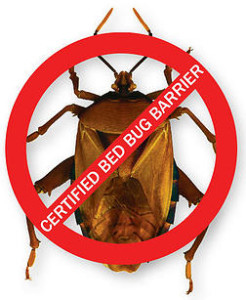Prevention

If you have indoor allergies, you need to take action against allergens in your home. Simple steps around the home can reduce your exposure to allergens and decrease or eliminate allergy symptoms. The first place to start is your bedroom. What should be an oasis is instead a trouble-zone for high exposure to dust mite. Your bed can be the greatest dust mite source, where over 1 million dust mites can live and contribute to allergy symptoms. Doctors and the National Institutes of Health (NIH) recommend dust mite covers or dust mite encasings as a top priority for reducing allergen exposure since encasings block dust mite and pet allergens in the bed, which you would otherwise inhale throughout the night. You can spend up to one-third of your day in your bedroom, so allergy relief steps should start with encasing the bed.
Manage
The Basics of Allergies

If you have allergies, then allergy relief is your goal. How will you successfully achieve this goal? By learning about allergies, understanding what causes your symptoms and taking preventative actions! An allergist can help you identify the best plan of action for your needs. If you have indoor allergies, you may be able to minimize your exposure to allergens, which can significantly reduce or eliminate symptoms. Any steps to reduce exposure will help as they will decrease the total amount of allergens that your body is coping with at that time (known as an allergen load). If you can lower your allergen load to below your allergic threshold (the point where you begin to have symptoms), you can ward off allergy attacks.
The key to success is understanding what steps are most meaningful to lessen your allergen load and to focus on those areas.
- Allergens are the substances that trigger allergic reactions.
- Although most people can easily be around these allergens, your body regards these substances as dangerous intruders and reacts to them with varying degrees of intensity.
- People with indoor allergies are typically allergic to allergens from dust mites, pets and molds.
- Decreasing your total exposure (allergen load) below your allergic threshold will ward off attacks.
Control
Meet the Dust Mite, Your Invisible Enemy
 Dust mites can be wreaking havoc on your health, and the tough part is that you may not realize these dastardly dust mites are to blame. Dust mites are one of the most common household triggers for allergy and asthma symptoms, but these invisible enemies are so small they can’t be seen by the naked eye. Even the cleanest homes can have high populations of dust mites. Some of the top spots for dust mites are areas such as the bed, carpet or soft furnishings—which could also be some of your favorite spots. By taking action against dust mites, you can protect yourself from these invisible enemies and find relief.
Dust mites can be wreaking havoc on your health, and the tough part is that you may not realize these dastardly dust mites are to blame. Dust mites are one of the most common household triggers for allergy and asthma symptoms, but these invisible enemies are so small they can’t be seen by the naked eye. Even the cleanest homes can have high populations of dust mites. Some of the top spots for dust mites are areas such as the bed, carpet or soft furnishings—which could also be some of your favorite spots. By taking action against dust mites, you can protect yourself from these invisible enemies and find relief.
Understand these key points about dust mites:
- Dust allergies are caused by the waste particles and dead bodies of the mite rather than by the mite itself.
- Dust mites thrive in pillows, mattresses, blankets, carpets and other soft furnishing that offer a dark, warm and humid living environment.
- Your bed is the ideal environment for mites because they need the humidity generated from your body and access to their #1 food source—your shed skin cells.
- Over 1 million dust mites can live in a bed where they can significantly impact your health while sleeping.


